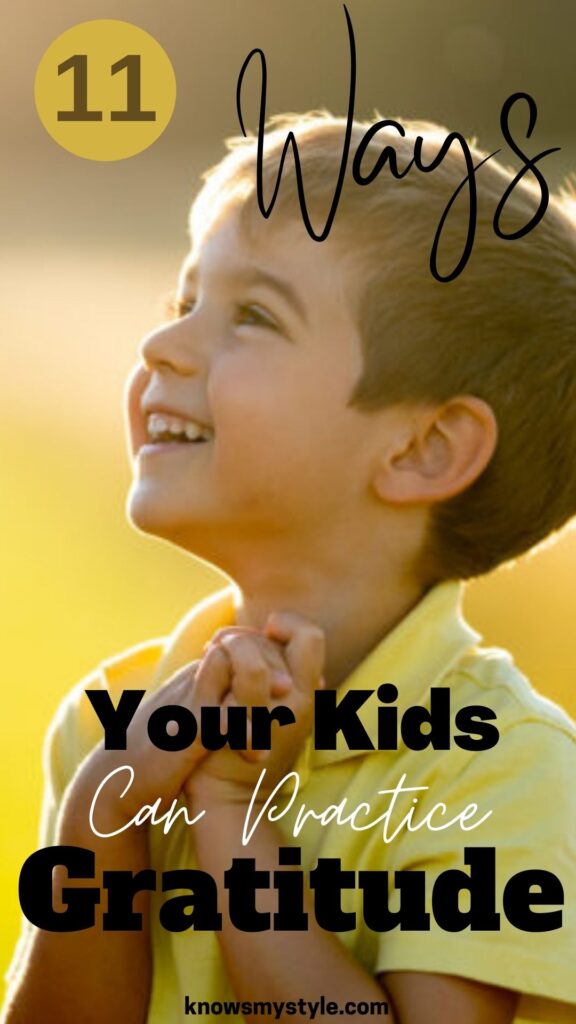The Benefits of Being Grateful.
It’s no secret that being grateful is good for you. It helps us to focus on what we have rather than what we don’t have. It brings us joy, which helps to protect against depression. And it allows us to change our attitude towards life so that it seems less stressful and more enjoyable. There are many ways on how to teach kids to be grateful nowadays.
Parents can start by teaching them by being grateful for what they have in life and helping those who are less fortunate than us, we can sustain the feeling of gratitude. However, it is essential to remember that many of us might not have all our basic needs and may be struggling with things like trauma or mental illness.
“Gratitude makes sense of our past, brings peace for today, and creates a vision for tomorrow.”
MELODY BEATTIE
How Can Parents Help Kids Become More Grateful.
Parents can benefit from practicing gratitude because they become better role models for their children and develop a stronger bond with their kids.
By teaching children Gratitude benefits them about the value of positive thinking and how to show appreciation for what they have. It also teaches them the importance of empathy, which is a quality that we all want to see in our children.
We should teach our children that gratitude is one of the keys to happiness, and they should be thankful for the smallest things that they have and get in life. Teaching children to be grateful is important because it will make them happier and because it will make society happier.
“Parents can help their kids become more grateful by reminding them of the things they’re thankful for, praising them for their accomplishments, and making them participate in service projects.”
Here’s a list of 11 different ways to teach kids to use gratitude in their lives and the benefits of practicing it.
Start the day with Gratitude.
The first thing we often think about when we wake up is the list of things to do and tasks that need to be done. It causes a lot of stress and makes us feel like we’re overloaded and don’t have enough time to achieve all the things.
Instead, we should start the day with gratitude. Not only it will improve our mood but also it will make us feel more productive. One example of teaching kids to be grateful is by reminding them how lucky they are in different areas of their lives.
Teaching children gratitude can be done in various ways, such as giving thanks before eating, being thankful for the food that they have in front of us, and also remembering those who don’t have it.
Teach kids to say “Thank You.”
“Thank you” is a simple phrase that is often neglected in our daily life. Nowadays adults with their busy lifestyles did not pronounce these two small words that can mean a lot to someone who really needs it.
Teaching kids to say “thank you” can help them develop important social skills, such as empathy and gratitude. Saying thank you also helps children know how to respond appropriately when receiving a gift from someone else.
Encourage your kids to Give Credit Where Credit Is Due.
It can be tough for kids to understand the concept of gratitude. They tend to think that it is their right, making it difficult for them to know why they should be grateful. However, this doesn’t mean that we should stop teaching them the importance of crediting other people for what they do.
We should teach our children that they should give credit where credit is due. When we do this, we train them to be gracious and more giving in their everyday lives. It will make them happier and more capable of loving others.
Help kids to create a Gratitude Jar.

This activity is a great way to teach kids to be grateful for the small things in life. It encourages them to count their blessings and appreciate all the good things that happen to them.
A Gratitude Jar is a tool that helps us focus on what we are thankful for in our lives. The idea behind this jar is that you write down one thing you’re grateful for on a small slip of paper at the end of each day and then drop it into the jar.
As time goes by, they will start to notice patterns of gratitude emerging, as the jar will be plenty, and with the hopes that the act itself will help improve their mental health.
Help your kids to express Gratitude through Actions and Words.
We can start teaching our kids to be grateful through actions and words when they are younger. The most important thing is that we do it consistently.
We should help them understand that even if they don’t always get what they want when they want it, there is always someone out there who would be happy with the little things in life.
Expressing gratitude can help kids practice empathy and compassion for others and themselves and develop a sense of hope.
The following are some helpful tips on how we can encourage our kids to express gratitude:
- Show them gratitude by thanking them for doing something or taking an interest in something they care about.
- Teach your kids the importance of being grateful for what they have, not what they don’t have or what someone else has.
- Allow them to participate in a random act of kindness by giving them a list of ideas to choose from, such as making a card for a sick friend, donating clothes to charity, or making their bed and folding their clothes.
- Encourage them to keep a gratitude journal to write down three things that made them happy that day and why they made them happy.
Write Thank-You Notes.
A letter of thanks can show gratitude and appreciation. It can be a way to thank you for the support, help, and time someone has given us.
We must teach our kids how to be grateful and how they can express themselves. We should encourage them every day while giving them the tools they need to write a letter of thanks.
They should know that it is important to send a note of gratitude when they feel like they need recognition or want to show their appreciation for something or someone else’s help.
Help kids to Identify and Count their blessings.
We are often consumed by what we don’t have or feel deprived of. However, gratitude is an emotion that helps us live a better life. It helps us be more positive, successful, and joyful.
Children are not born with gratitude, so we need to be models for them. If they are not encouraged to express their gratitude, they may not develop the habit of being grateful.
Teaching children how to be grateful is one of the main reasons parents should take time out for them every day. This practice helps kids identify their blessings and count them up at the end of each day or week by looking at what they have accomplished or accomplished well in that time frame.
Parents can teach their children about this skill by talking about all the things they are grateful for, like having families, having good health, having friends, having food to eat every day, going to school, and learning new things every day.
As parents, we should show them our Gratitude.
The best way to teach them is by showing them our gratitude. Your children are watching you and what you do.
A new study has found that how you interact with your parents can greatly affect how your children will be later on. The study found that children raised in a home where they are shown gratitude are more likely to be grateful once they have their own family, which leads to more harmonious relationships.
Many parents might not be aware of this, but when your child sees you being thankful for the things you have, it teaches them positive behaviors.
Talk about Things that your kids are Grateful For.
While happiness seems to be the goal of many people, the truth is that life has its ups and downs. Children must learn to be thankful for what they have despite what life throws at them.
As a mom, I want my child to be grateful for the things that he has. I want him to know that he doesn’t need much to be happy and grateful for the life that he lives.
Some parents like me teach their kids gratitude by taking them out in nature and teaching them about all of the things in nature that we take for granted.
When we teach our children appreciation, we are teaching them respect and gratitude for themselves and the world around us.
Give them the Space and Time to express their Gratitude.
In our society, we have been taught from a young age to desire more and more. It can lead to a lack of gratitude for what we have. To teach kids the value of being grateful, parents should give them the space and time to express their gratitude.
A five-minute practice every night of expressing gratitude will help your child create an attitude of gratitude that will last throughout the day.
Happy people are more likely to be successful, healthy, and happy. Expressing gratitude is one of the most basic ways for people to feel more fulfilled in their lives.
Do something nice for someone else without expecting anything in return.
Teaching kids to be grateful is a good way for them to learn kindness and empathy.
One of the best ways to teach children how to be grateful is by practicing gratitude. The easiest way to do this is by doing something nice for someone else without expecting anything in return.
Generosity is a character trait that doesn’t come naturally. It takes more than one try before children start to understand this concept, and some kids may never get it. But, with patience, practicing gratitude can be learned in children of all ages.
Children should learn the value of giving and not always receiving. They should know that they can make someone’s day better just by doing something for them.
Conclusion:
Gratitude is an important virtue for everyone to adopt. It can transform our lives by making us happier and healthier people.
Parents need to emphasize the importance of teaching children about gratitude. It will help them grow into well-adjusted adults that will learn how to appreciate all life has given them.
A grateful attitude can lead to several positive outcomes for the child, including improved mental health and stronger relationships.
The science of gratitude has shown that those who are grateful, live better lives. It is because gratitude can change your perspective on life, help you feel more connected to the people around you, and bring you happiness.
In conclusion, it is essential to teach children how to be thankful for all the good things they have in their lives.
Follow us on Pinterest for more Parenting Hacks
